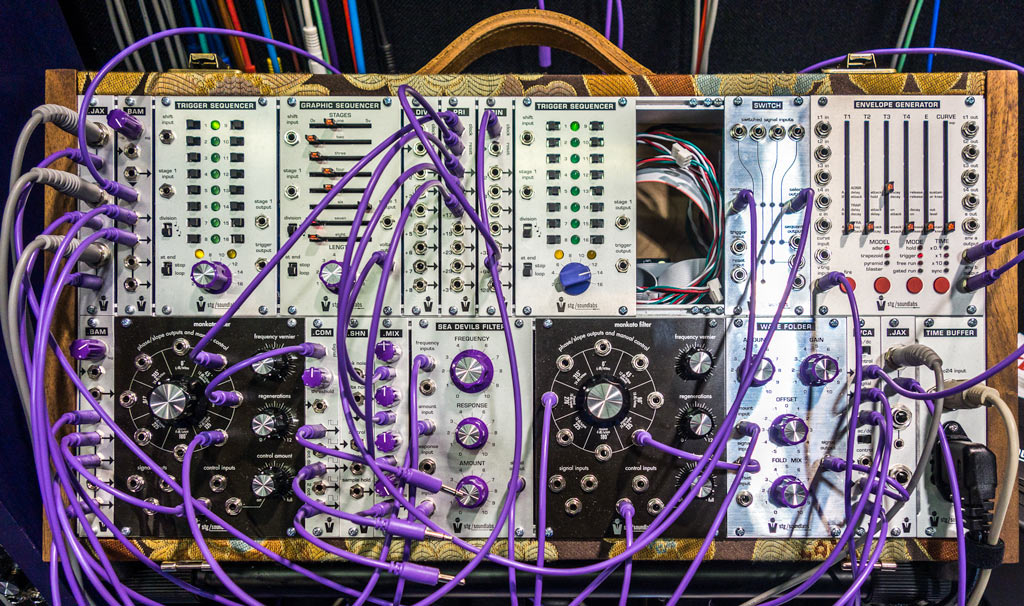If there’s a theme to this installment, it’s promising modules we saw previewed last year (and that we thought were going to ship last year) getting refined and re-introduced this year. I’m not complaining; all benefitted from the additional thought and user feedback. It’s not like there’s an outcry that new modules aren’t being introduced fast enough; just look at our bank accounts…
STG Soundlabs
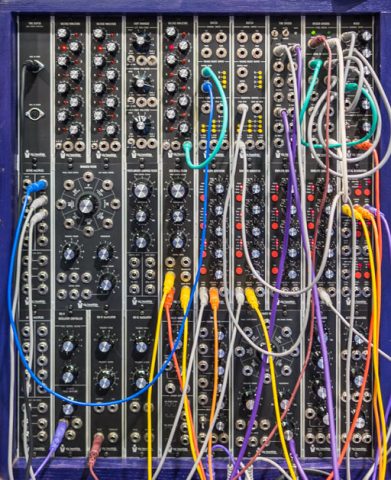
In STG Soundlabs Eurorack news, a Eurorack version of their Switch – previously available in MU format – is almost ready. It offers both triggered and voltage controlled switching between inputs (with 0-1 volts at the CV input meaning no connection), and is internally wired to support the STG Sync Bus (driven by their Time Buffer clocking input module). When connected to the sync bus, inputs one through four are normalized to 50 percent duty cycle rhythm clocks of 8th, 16th, 16th triplets, and 32nd notes.
The long-awaited Envelope Generator is also almost ready. Aside from multiple envelope shapes and very fast speeds, one of its claims to fame is matching the Moog 911 ADSR attack shape. It also takes advantage of the STG Sync Bus to match its timing to incoming tempo. I got to play with a near-production prototype after the show, and really enjoyed how fast the individual stages could go (there’s a three-position time range switch) as well as some nice tricks with the curves, including a two-segment decay with settable break point between the segments.
STG was also showing the surface mount, skiff-friendly version of their flexible Wave Folder. When STG Soundlabs started, they stated a goal of using old-fashioned through-hole circuit boards and components to make the modules easier to service – particularly the electrolytic capacitors used for power supply filtering, which are known to deteriorate with age. However, these larger parts meant deeper modules, while many wanted to use shallow skiff-style cases, – particularly for gigging. After some research, STG Soundlabs found surface mount ceramic caps that could replace electrolytics, removing the weak link and paving the way to creating skiff-friendly modules using surface mount technology. The Wave Folder was the last of the existing product line to get this conversion.
By the way, after NAMM the Suit & Tie Guy stopped by my Fortress of Solitude in the Sandia Mountains on his way back to Chicago from NAMM, and I got a chance to play with several of his modules. In addition to spending some quality time with the Envelope Generator and Wave Folder (as well as learning more about the Switch), I ended up stealing one of the Mankato Filters out of his own system – that thing sounds fat, with a supernaturally wide range and distinct differences between the different outputs. Expect videos on all four over the next year.
Doepfer
The Doepfer booth personnel was having so much fun tweaking a huge sequenced patch running on the monster system they brought, that I had a hard time tearing one away to talk about their new modules! The main focus this year seemed to be at the start and end of the signal chain, with new oscillators and a voltage controlled performance mixer.
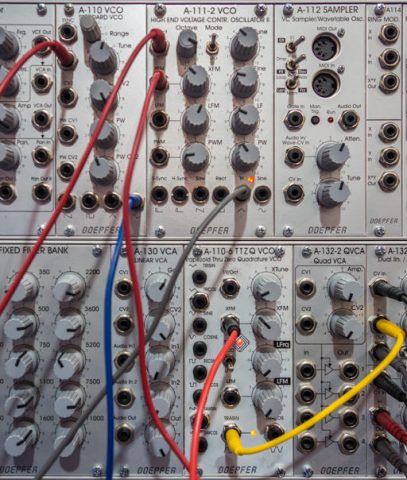
To review, the A-110-6 is based on a new oscillator core design first proposed by Don Tillman in 2003. An oscillator’s “core” is the waveform it produces naturally; all of its other waveform outputs are derived from this core. For example, in a sawtooth core oscillator, a voltage rises until it reaches a threshold, and then resets. How fast it rises determines the frequency of the oscillation. You can then process this sawtooth to create other waves – for example, running it through a full wave rectifier produces a triangle; running it through a comparator produces a square or pulse wave.
The trapezoid core was originally conceived as a digital design, but Dieter Doepfer figured out how to do it in analog. Aside from enjoying the challenge and the benefit of hearing a different waveform (a trapezoid is like a clipped triangle, both in appearance and sound), it’s also attractive for its ability to easily form other waveshapes by shifting copies of the core trapezoid shape. Indeed, the most obvious difference between last year’s prototype and this year’s near-finished module was that there are 10 waveform outputs: 5 different waveshapes x 2 different phases. It also has thru-zero linear frequency modulation (including an LED that indicates when the linear control voltage has gone below zero, meaning the oscillator is running backwards) and a VCO/LFO range switch. Since it how contains the planned expansion module as part of the core module, the price has gone up from ~150 Euro to ~250 Euro.
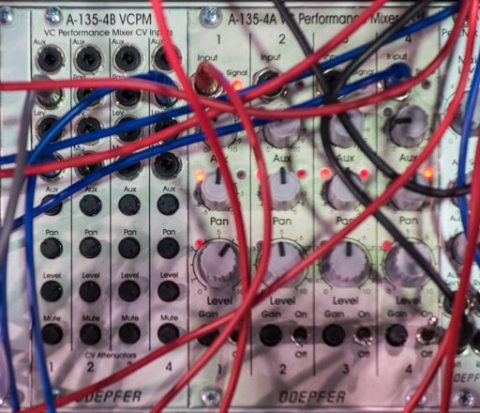
The 4B module is unusual in that it’s more than just a bunch of CV inputs for mute, level, pan, and aux send; each function also has an associated attenuverter. The mute itself is not a hard on/off, but has a transition zone so you can also treat it as a downward expander for “ducking” (lowering the level of one channel based on the loudness of another channel). Multiple 4A/4B pairs can then be connected to the already-released A-138o Performance Mixer Output ($50 silver/$60 black) for summing. A new A-13-4C Quad Envelope Follower ($130) was also introduced for combining with a 4A main block. It has adjustable attack and release times per channel, which you need to perform the ducking patch described above.
Doepfer also announced the A-150-8 Octal Programmable Switch (~150 Euro, sometime this spring), a 48hp A-100LC1 case with 380ma power supply ($135 in raw wood; $160 coated black), and more modules available in the “vintage” black with skirted knobs.
Tom Oberheim
Tom Oberheim of Marion Systems (one of my previous bosses from my first go-round in the music industry) was showing a pair of Eurorack effects, plus the latest refinement of a Eurorack version of his famous SEM (Synthesizer Expander Module) that he previewed last year. It’s now called the SEM-X (~$799; available in May?), and features a separate patch panel that can be placed at the left, right, above, or below the main sound-producing module – this is Tom’s way of solving the issue with cables draping over the controls you’re trying to edit. (The signals available at the 35-jack patch panel might see some additional tweaking before release.)
Whereas most of his standalone SEM re-issues have been very faithful to the original module from the 70s, the SEM-X features several updates, including the addition of a triangle wave from the oscillators; an “XMOD” section for VCO1 to frequency modulate VCO2, the pulse width of VCO2, or the filter (and with more flexible modulation routing all around); two ADSR envelopes instead of the original AR shapes; and multiple LFO shapes including a sample & hold enabled by the new on-board noise source. The only thing I’ve seen “missing” compared to the original was a crossfade control between the sawtooth and pulse waves; they just have on/off pushbuttons now. When you consider this is a two-VCO, two-ADSR synth voice with one my personal favorite filters, the possible $799 price looks good. Tom said he’s looking forward to finishing these so he can recreate his original Four Voice and Eight Voice polyphonic synths. The Mini Sequencer previewed last year is also still on the books; its release date has just been pushed back.
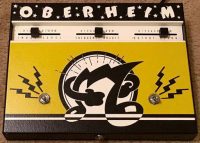
And with that, I have just two more installments left in my NAMM 2017 reports – one covering Noise Engineering, QuBit, and Vermona, and a final wrap-up featuring individual modules from a number of companies (including the much talked about Eurorack delay from Eventide). Good thing Musicmesse and Superbooth17 aren’t until April, so we can catch our breath!

